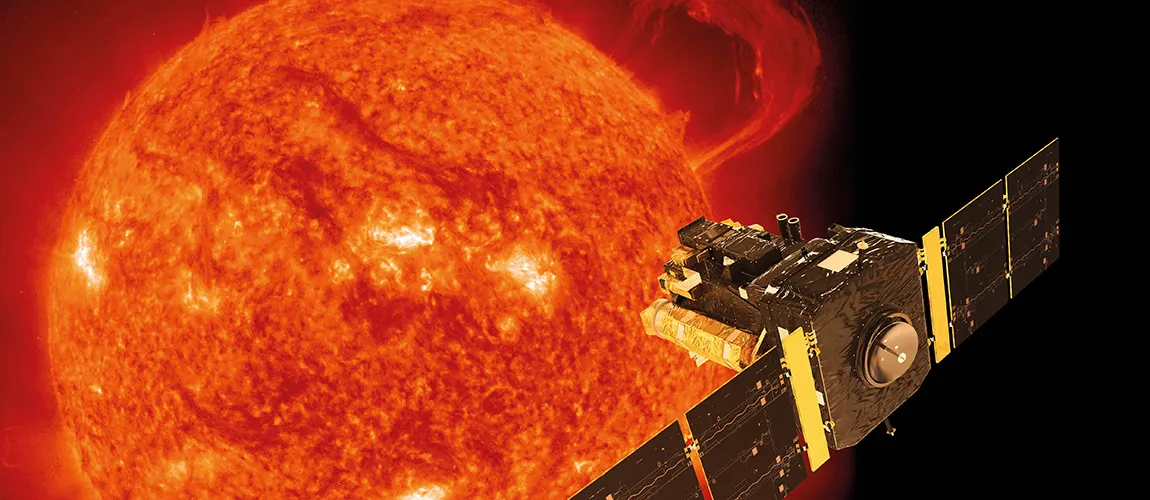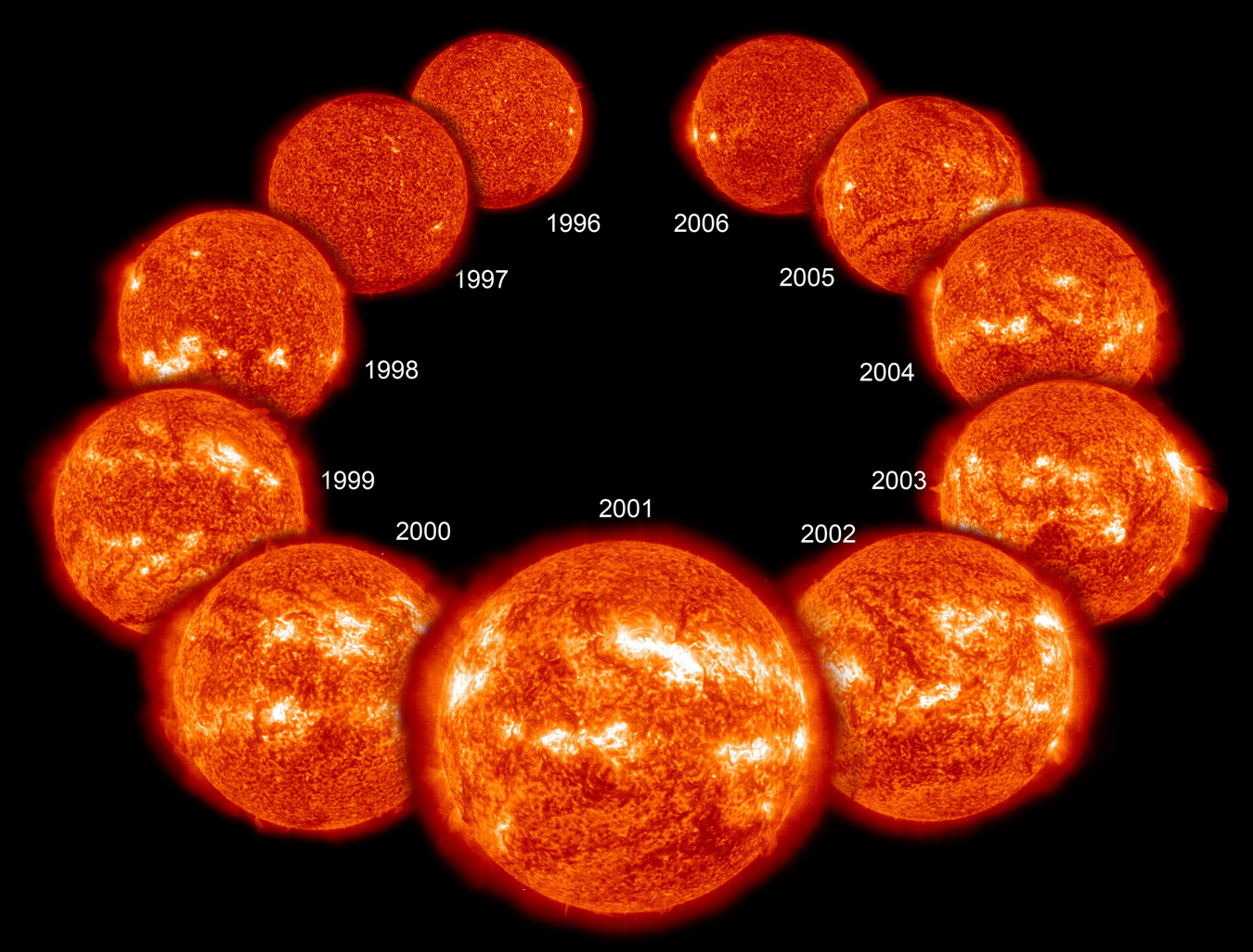Follow us on Google News (click on ☆)
These results pave the way for further research to better understand the nature of magnetic activity and its impact on stellar oscillations. The study can be found in the journal Astronomy & Astrophysics.

Illustration of the SOHO satellite orbiting the Sun. Among the instruments on board is GOLF, which provided some of the data used in the study.
© SOHO/ESA/NASA
Asteroseismology, or helioseismology when it concerns the Sun, is a branch of astronomy that focuses on the study of stellar oscillations.
“To understand, you need to imagine a star as a large ball of gas in constant motion. Inside this star, there are waves or pulsations that cause it to vibrate, much like sound resonating inside a musical instrument," explains Jérôme Bétrisey, postdoctoral researcher at the Department of Astronomy at UNIGE's Faculty of Science and the study's lead author. "These vibrations cause the star's surface to slightly move and change brightness in a regular pattern. Thanks to highly precise instruments, we can detect these variations in brightness from Earth or space," continues the researcher.
Listening to the symphony of stars
By observing these changes, researchers can learn a great deal about the star's internal structure and determine important characteristics such as its size, age, chemical composition, or its stage in the stellar lifecycle. A precise understanding of a star's characteristics is essential, among other things, to determine the properties of the planets that orbit it or to trace the history of the Milky Way.
Despite tremendous successes in recent decades, asteroseismology has also highlighted significant discrepancies between observations and theoretical models of stars' internal mechanisms. Over the years, various methods have been developed to reduce these gaps, with varying degrees of success. However, none of the current methods take into account stellar magnetic activity, as its impact on results was generally considered negligible.
The international team led by Jérôme Bétrisey has just proven the contrary. They established that the Sun's age, as determined through helioseismology, varies significantly depending on the solar cycle's activity level. To give a sense of magnitude, the Sun is approximately 4.6 billion years old, and variations of up to 300 million years were observed between solar minima. While these variations may seem small compared to the Sun's total age, they are no longer negligible when considering the level of precision that future space missions will achieve.
The sun's seismic age is tied to its solar activity cycle
To better understand the impact of magnetic activity on the Sun, scientists analyzed 26.5 years of solar data, covering two complete activity cycles. They divided this data into approximately 90 small series, each lasting about a year and staggered by three months from the next. For each of these series, a seismic analysis was performed, allowing the researchers to observe how the Sun's fundamental properties, such as its mass, radius, and age, evolved over time.

Evolution of the Sun during cycle 23. The image shows a collage of 11 photographs of the Sun by the SOHO satellite, highlighting the 11-year solar activity cycle with minima around 1996 and 2006 and a maximum around 2001.
© SOHO/ESA/NASA
Two independent datasets were used to verify the robustness of the results. One came from the University of Birmingham's ground-based telescope network BiSON (Birmingham Solar Oscillations Network), and the other from the GOLF instrument (Global Oscillations at Low Frequencies) aboard the SOHO (Solar and Heliospheric Observatory) satellite, which has been orbiting the Sun since the mid-1990s.
Regardless of the configuration tested, the age of the Sun determined through helioseismology was correlated with the activity level of the solar cycle. Variations of about 6% on average were measured between solar minimum and maximum periods, which is highly significant compared to the precision targeted by future space missions that will analyze other similar stars. For instance, the PLATO mission (PLAnetary Transits and Oscillations of stars) aims for an accuracy of 10% in determining the age of stars like the Sun.
The analysis of GOLF and BiSON data also revealed that the impact of the activity cycle on the seismic age is more pronounced during the more active of the two studied cycles. This result is expected from a physical standpoint. "However, the Sun is not a particularly active star, which suggests that the impact of magnetic activity could be quite significant for more active stars like those that PLATO will observe," adds Jérôme Bétrisey.
A bright future for studying magnetic activity in stars
The findings of this study demonstrate that stellar magnetic activity poses a significant challenge for future space missions like PLATO, particularly in the characterization of the most active stars. “However, this discovery also opens up numerous exciting research avenues,” concludes Jérôme Bétrisey.
Stellar magnetic activity significantly influences stellar oscillations, complicating the precise determination of fundamental properties such as stars' mass, radius, and age. For future space missions, this means that more sophisticated methods will need to be developed to account for magnetic impacts.
The challenges posed by magnetic activity will also encourage researchers to delve deeper into this phenomenon. This could lead to a better understanding of stellar physics, particularly how magnetic fields interact with stars' internal oscillations. These studies might also enhance our comprehension of stellar activity cycles, similar to the solar cycles.